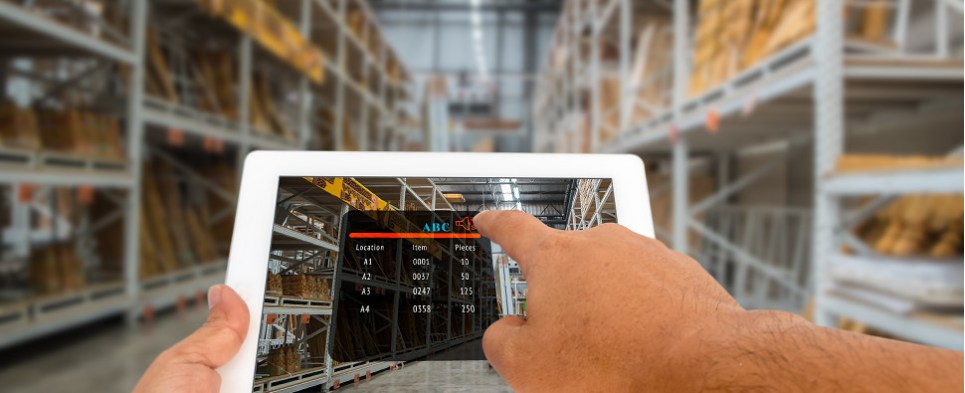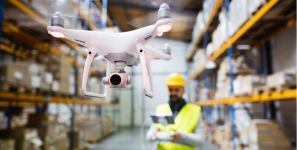Augmented Reality: The Next Big Thing in Global Logistics?
Imagine a warehouse staff efficiently sorting through various packages during a manual picking operation and accurately locating the right one with the help of an augmented reality system (AR) observable through his handheld device. Capable of more than simply determining the correct item, the AR system installed into the device also allows the warehouse staff to instantly recognize objects, read barcodes, provide navigation and essentially eliminate the hassles associated with traditional, paper-based approach picking process.
Though the above scenario has yet to become a reality and may seem to belong strictly to the realm of science fiction, AR has evolved from simply being a gimmicky and novel technology meant for marketing purposes into a technology with the potential of revolutionizing the way we conduct business.
What is Augmented Reality and Why is it Such a Big Deal?
Essentially, AR is a technology which superimposes additional layers of digital information into the user’s immediate environment. These digital layers effectively augment and enhance the user’s reality and are observable through the use of smartphones, tablets and other devices.
The exciting properties of AR technology have inevitably garnered mainstream attention in recent years and rendered it as a technology that is both versatile and mind-blowing. The popularity of AR technology has thus surged due to its rising prevalence across multiple industries and fields, such as gaming, architecture, real estate, entertainment and perhaps most notably; education.
With its current popularity at an all time high, the AR market growth is forecasted to hit $120 billion by the year 2020. Due to its far reaching influence, AR has become an indispensable marketing tool capable of disrupting conventional methods of marketing as well as reshaping how some elements of business are being conducted.
Augmented Reality: No Longer Just a Gimmick
The AR market continues to grow exponentially, in part due to major companies such as Apple, Google and a number of other companies investing large amounts of funds to kick-start numerous AR projects and apps. Numerous AR start-ups worldwide are also beginning to emerge, resulting in a variety of innovative AR apps and projects, which includes consumer ready software and hardware.
This seemingly unstoppable momentum naturally gives light to feasible business opportunities across multiple industries including global logistics. Thus providers of global trade services may greatly benefit from the implementation of AR technology into the logistics industry.
Augmented Reality in Global Logistics
Admittedly, AR is still very much in its infancy. However, there are several potential applications and uses which could benefit both the companies and consumers of the logistics industry. Some examples below.
International freight handling. International trade means dealing with export/import and trade regulations which vary from country to country. A worker assisted by an AR recognition system could easily determine whether or not a particular shipment complies with the prevailing trade regulations of a specific destination simply by scanning it with a device. The AR system can also be adjusted to instantly provide translations of required trade documents and suggest changes and amendments should the need arises.
This function should be able to speed up the administrative process of an international freight handling by minimizing delays associated with shipment reports or storage delays.
Warehouse layout planning. An AR system allows users to easily maximize the available space of a warehouse in correlation to the inventory. By overlaying the layout plan onto the actual, real world warehouse, users can determine which layout works best and can potentially reduce the cost associated with warehouse planning and maintenance.
Freight loading. The loading process can be one of the most time consuming process of the logistics process, as it requires to take into account various factors such as size, weight and destination of each item to ensure an effective freight transport. It’s no surprise that freight loading is often the bottleneck of the entire shipping process.
An AR device could be used to scan the cargo and provide loaders with information about the shipment and instructions on where to place them within the vehicle almost instantly. Unlike paper-based cargo list that doesn’t allow for last minute changes, AR based cargo list offers obvious improvement in efficiency as it can adapt to unforeseen changes easily.
Conclusion
Though the ideas mentioned above are technically possible to realize, it would take at least another decade for the global logistics industry to ready itself and adopt AR technology. This article serves as an illustration of what AR technology can currently provide and how it can be potentially change the way we perceive the logistics industry in the not-so-distant-future.
Ary Kharisma is a copywriter for Octagon Studio, the Indonesian / Ireland based tech company specializing in providing Augmented Reality (AR), Virtual Reality (VR), and Mixed Reality (MR) products and solutions.





This can be such things as the writing of the short
article, the responses to trivia issues on a certain issue,
or possibly a picture that’s been constructed according-to certain specifications.